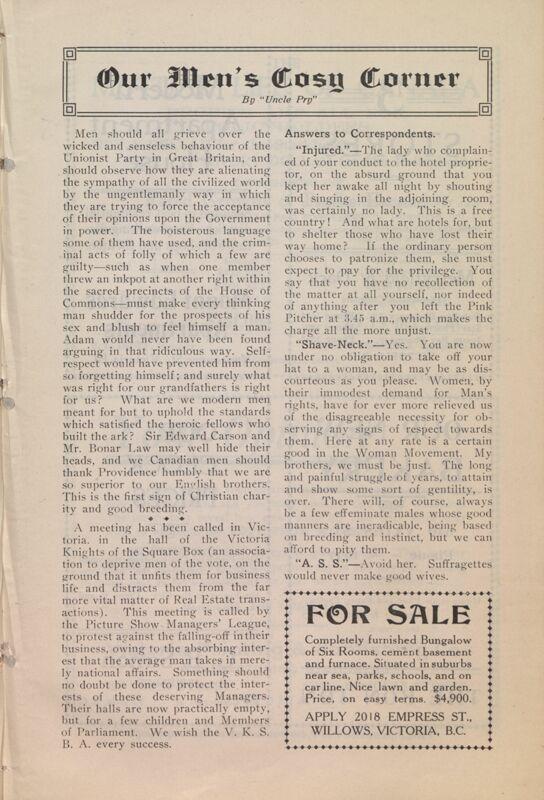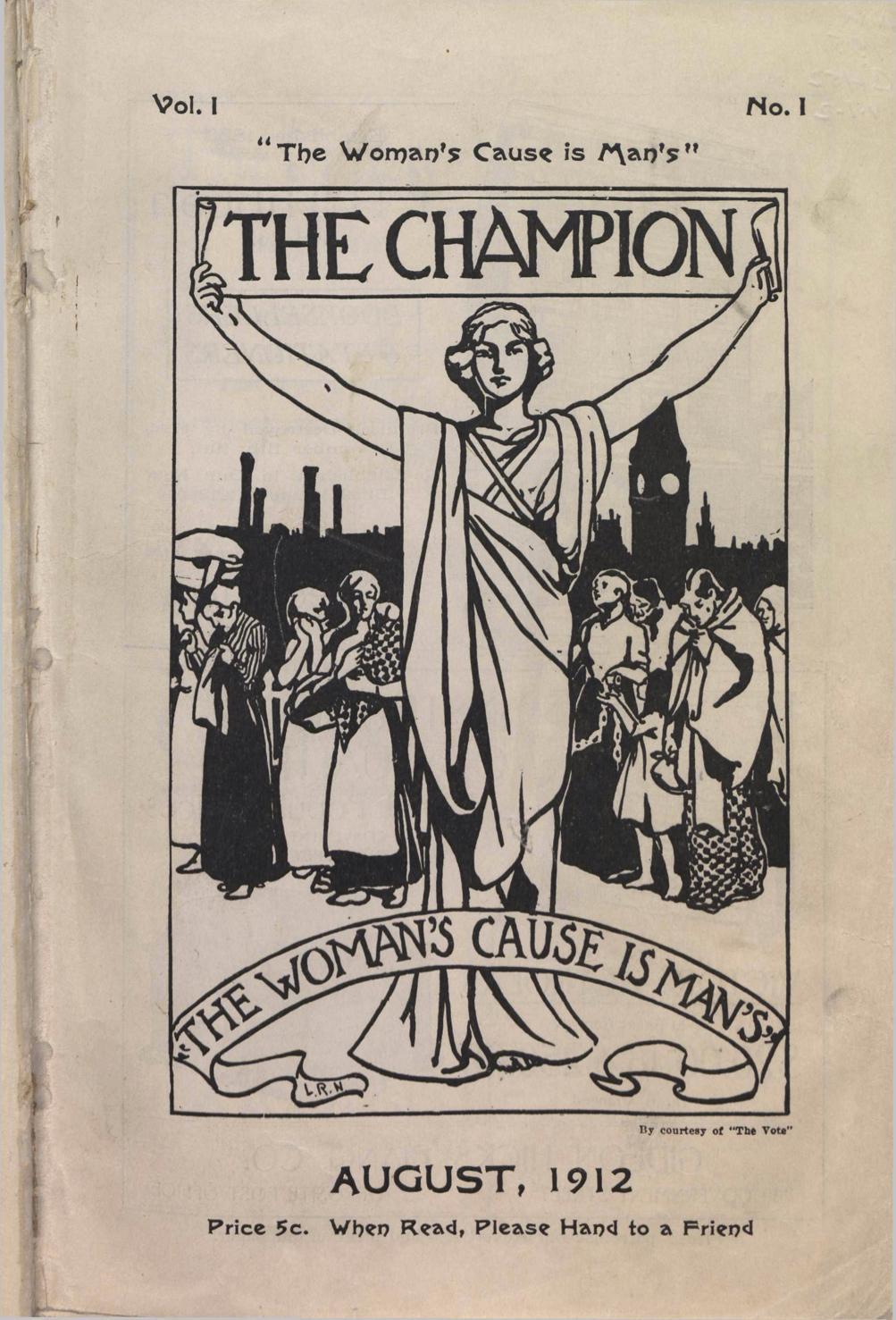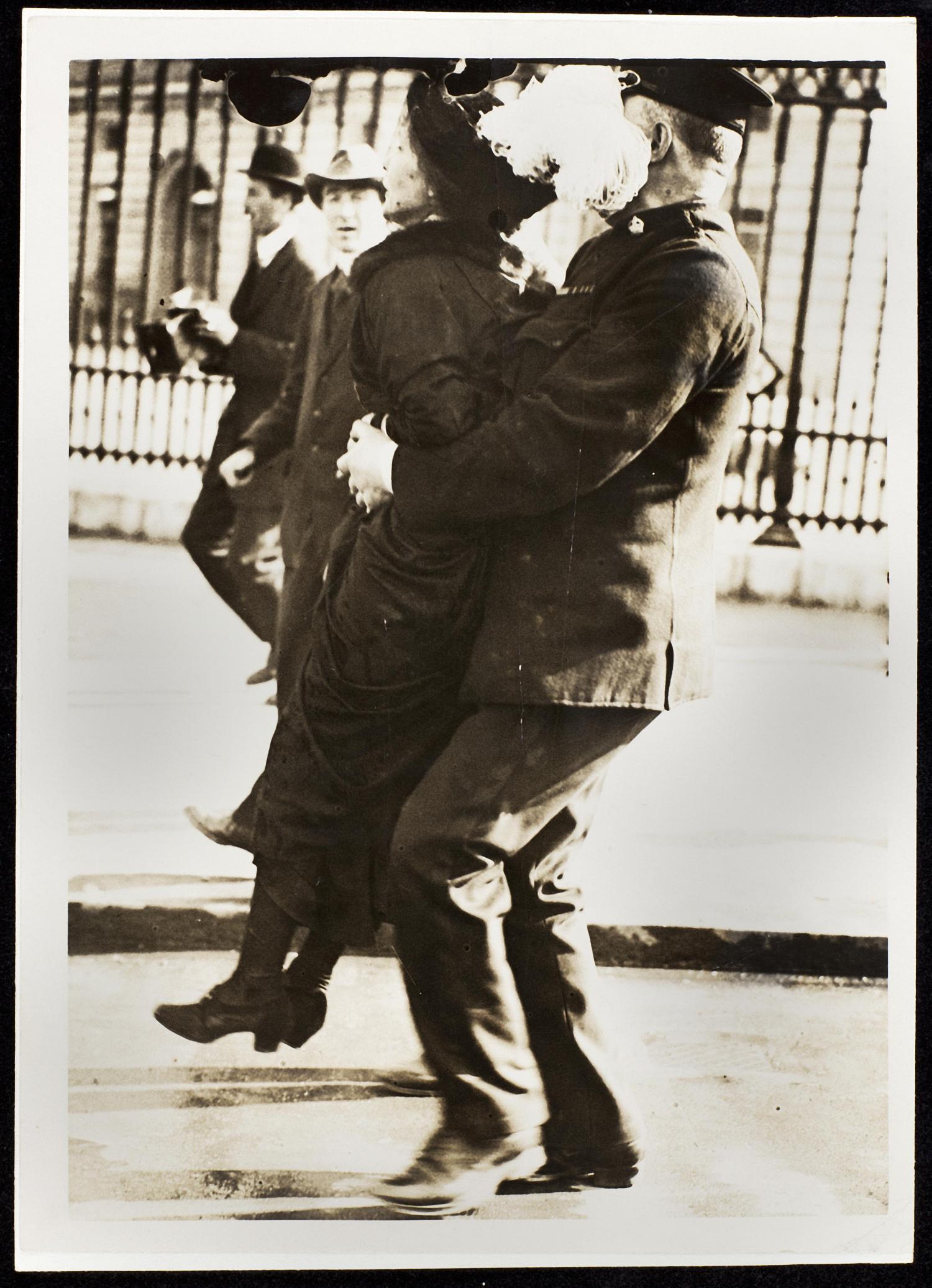The Champion Newspaper
Women demand suffrage in a publication singularly dedicated to the cause
Date: 1912
In the autumn of 1910, an invitation was sent out to the civic-minded residents of Victoria. A new group calling itself the Political Equality League (PEL) had been formed. "The aim of which," the invitation read, "shall be to secure the removal in British Columbia of the disabilities which rest on women as a voter and citizen and to secure her political enfranchisement." The goal, in other words, was to organize to get women the vote.
The province had flirted with the idea in the past, as 19th-century suffragists painted a pretty picture of women as the guiding light of white, Christian society. But things were different now. Other democracies across the globe were extending the vote to women — or at least seriously considering it — and women in B.C. were taking note. Now, the argument went, women should be able to vote, not for the sake of Christian morals, but for the sake of democracy itself.
This international wave of enthusiasm for women's suffrage owed much to the medium of print. Magazines and newspapers from the United States and elsewhere informed readers of progress being made in other countries, all the while disseminating ideals of a more egalitarian society at home. Two years after the first PEL meeting, two of its founding members, Maria Gordon Grant and Dorothy Davis, would start the league's very own publication: 'The Champion.' It would be the only English-language newspaper entirely devoted to the cause of women's suffrage. Every month, the organization distributed up to 650 copies throughout the province, including in the cars of Canadian Pacific Railway trains.
In its pages, The Champion dutifully covered suffrage news from all over the world, including a California election where newly-enfranchised women had turned out. It also featured the writing of famous suffragists like Emmeline Pankhurst from Great Britain. The international stories fostered a sense of transnational solidarity for B.C.-based suffragists. But the newspaper also served as a platform for feminist debate and discourse specific to the province, and it unified women beyond any single "religious creed, political party, or social class." In addition to straight news coverage, one could find a variety of rhetoric ranging from the serious to the satirical: poems, letters to the editor, editorials, and a mock men's column entitled the 'Men's Cosy Corner,' where 'Uncle Pry' offered advice on "all men's personal affairs," from manners to appropriate cocktail attire.
Publication of The Champion only ran for two years. It closed down shop in 1914. A war looming in Europe diverted much of the energy initially given to women's suffrage to wartime endeavours like the Red Cross and the Canadian women's charity the Imperial Order of Daughters of the Empire. But the women behind The Champion would see their efforts bear fruit only a few years later. In 1917, B.C. became the fourth province to enfranchise white women — following Manitoba, Saskatchewan and Alberta. It would take another three decades, and another world war, for women of colour in B.C. to receive the same right. Meanwhile, women with Indian status would only be granted the right to vote in federal elections in 1960.
Sources:
- Campbell, Lara. A Great Revolutionary Wave. UBC Press, 2020.
- Canadiana. "The Champion." Canadiana by CRKN, https://www.canadiana.ca/view/oocihm.8_06957.
- Hale, Linda Louise. The British Columbia Woman Suffrage Movement, 1890-1917. University of British Columbia, 1977.
- Latham, Barbara, and Cathy Kess, editors. In Her Own Right: Selected Essays on Women’s History in B.C.Camosun College, 1980.
- Sangster, Joan. One Hundred Years of Struggle. UBC Press, 2018.
- Strong-Boag, Veronica Jane, editor. British Columbia Reconsidered: Essays on Women. Press Gang Publishers, 1992.
- Weppler, Doreen Madge. Early Forms of Political Activity among White Women in BC: 1880-1925. Simon Fraser University, 1971.





